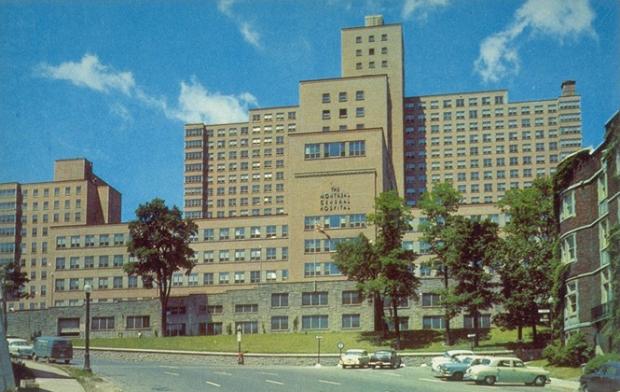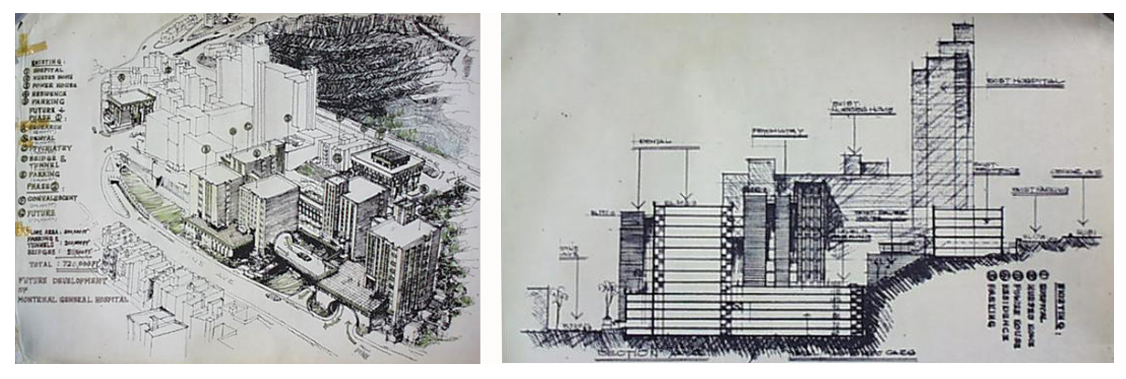October 7, World Architecture Day
On this World Architecture Day, we spoke to Réda Sofiane Houmita, Building Consultant in the Planning and Project Management Department of the Technical Services Division. Trained as an architect, Réda is working on the project to bring the Montreal General Hospital up to standard.

Originally located in old Montreal, the Montreal General Hospital was inaugurated on its present site in 1955. “The three brick-clad buildings adopt a functionalist architecture based on T or H-shapes,” Réda tells us.
“Behind the rather simple-looking main pavilions of the Montreal General Hospital, there were hidden conceptual challenges caused by the steep slope of the site, with a 36.6-metre height difference between Pine Avenue and Cedar Avenue. Designers of the original building had to find a way to enable circulation between care units and pavilions, despite the fact that the first floor of Cedar Avenue is at the same height as the sixth floor of Pine Avenue. Their solutions were innovative for the time ” Réda tells us.

This is precisely the same challenge that Réda and his team have taken on with the modernization project. “We have to consider today's circulation needs. Today's standards require a considerable amount of space around a patient's bed to enable cardiovascular resuscitation maneuvers. As a result, the trend is towards single rooms with washrooms for each room. Imaging equipment, now indispensable, requires isolated, radiation-tight rooms. This is a challenge in a building that was constructed in another era, when practices were not the same" he adds.
“We also have to minimize the impact of these transformations. When we relocate a department to another location, we then have to relocate the existing department to another one. This creates an effect known as the cascade effect.”
Above all, it's patients who are at the heart of our work, insists Réda: “We have to imagine new spaces where they can receive the best care. All our work is guided by this essential principle, and personally, I find it one of the most interesting aspects of architecture: creating spaces where humans can feel at ease.”

